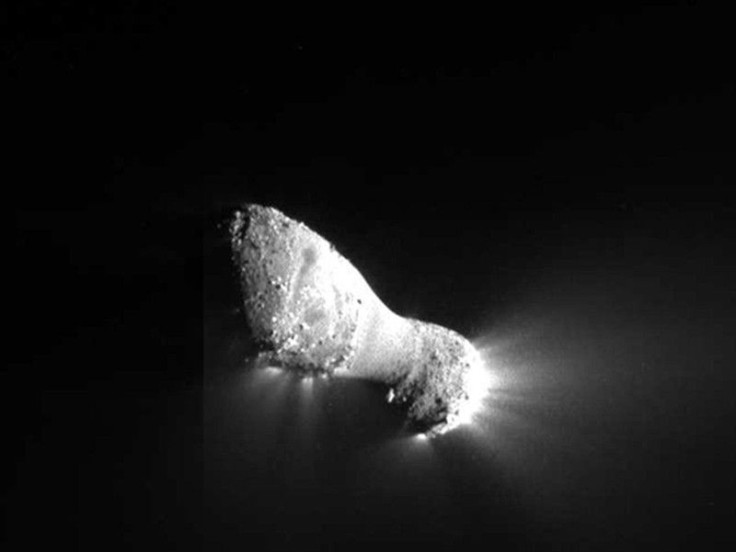Water-spewing Comet Hartley 2 forces scientists to re-evaluate theories on solar system formation

Photos taken by the Deep Impact spacecraft have revealed an unusually hyperactive little comet, called Hartley 2, which spews inordinately high amounts of dry ice and carbon dioxide into space.
For scientists, the new images from Deep Impact's comet flyby have come across as weird and strange. The comet behaves mysteriously --it spews out more water and dry ice than any other comet of its size, and it spins rapidly as it tumbles while most other comets rotate slowly in one direction.
Scientists are puzzled over Hartley 2's strange features and ill-mannered water-spouting. And they are forced to revisit some theories regarding the solar system's formation.
Comets are essentially balls of ice, gas, and dust that and they have been presumably in existence for billions of years, since the time the planets in the solar system came into being. Scientists have always believed the study of comets can give vital clues to the formation of the solar system.
Now, Hartley 2 has thrown them off track. Our assumptions of what drives a typical comet's activity, as well as what the composition of the primordial disk was and how much mixing occurred in the disk, have been turned upside down. We need to re-evaluate our theories, said Lori Feaga, a University of Maryland planetary scientist, according to space.com.
For scientists, understanding what drives comets' activity is very important as they delve into the mysteries of the solar system. Water-spewing comet Hartley 2 has puzzled the scientists in a couple of ways. First, it is unclear why the comet has so much CO2 in it.
According to University of Maryland professor Michael A'Hearn, Hartley 2 is producing more water than should be possible from such a small surface area. The scientists think this could be the effect of the evaporation of carbon dioxide and other volatile gases, which drags chunks of ice out of the nucleus.
Feaga, who works on NASA's Extrasolar Planet Observation and Deep Impact Extended Investigation (EPOXI) mission, says dry ice is what's driving the comet's hyperactivity. It drives icy particles such as silicates, dust grains and water-ice out of the interior of the comet.
When the dry ice in the interior heats up, it changes to a gas, which is much less dense. As it expands, it creates an explosive force that pulls out other things with it as it tunnels through the nucleus to get out.
But Hartley 2 spews twice as much from one of its bulbous sides than from the other, Feaga says.
And that leads to the second confusion. If one end of comet Hartley 2 spews out double the amount of dry ice than the other, it could mean that the two ends could have been formed in separate places in the early solar system, according to the scientists. These ends could have collided at a later point and got stuck.
In the solar system during its formation, there was a proto-planetary disk that was like a large Frisbee of rotating material ... The higher-density material like iron was closer to the sun, and the lower-density materials like ices were further out. So depending on the distance from the sun, we have this assumption for what existed there, Feaga explained.
The Deep Impact spacecraft flew within 435 miles of the comet in November last year. The images it sent back to Earth showed a comet shaped like a chicken drumstick or a dumbbell. The images showed the jets of gas and particles bursting from the comet, which effectively created a snowstorm.
© Copyright IBTimes 2024. All rights reserved.




















